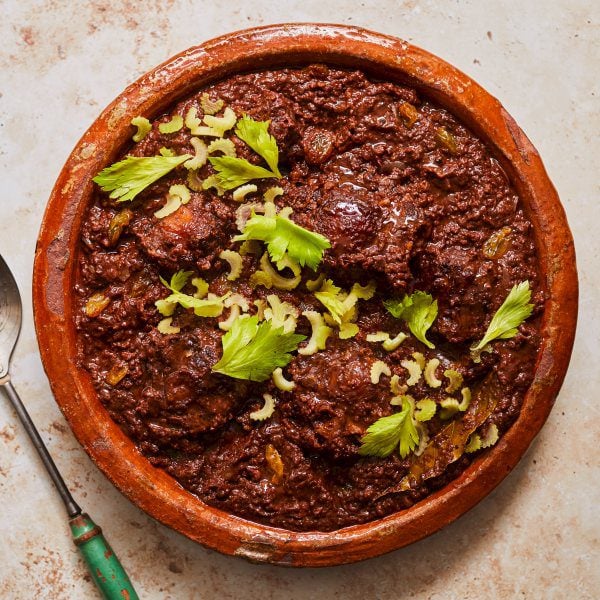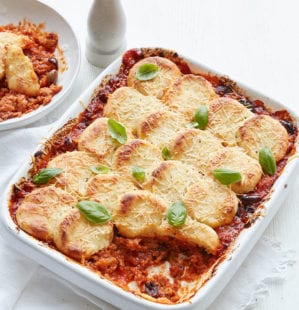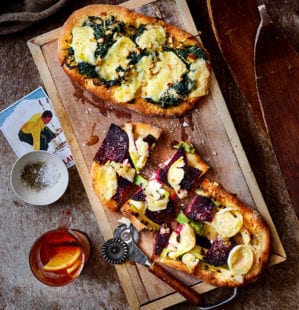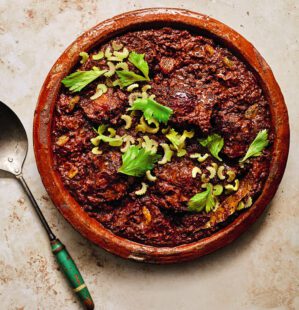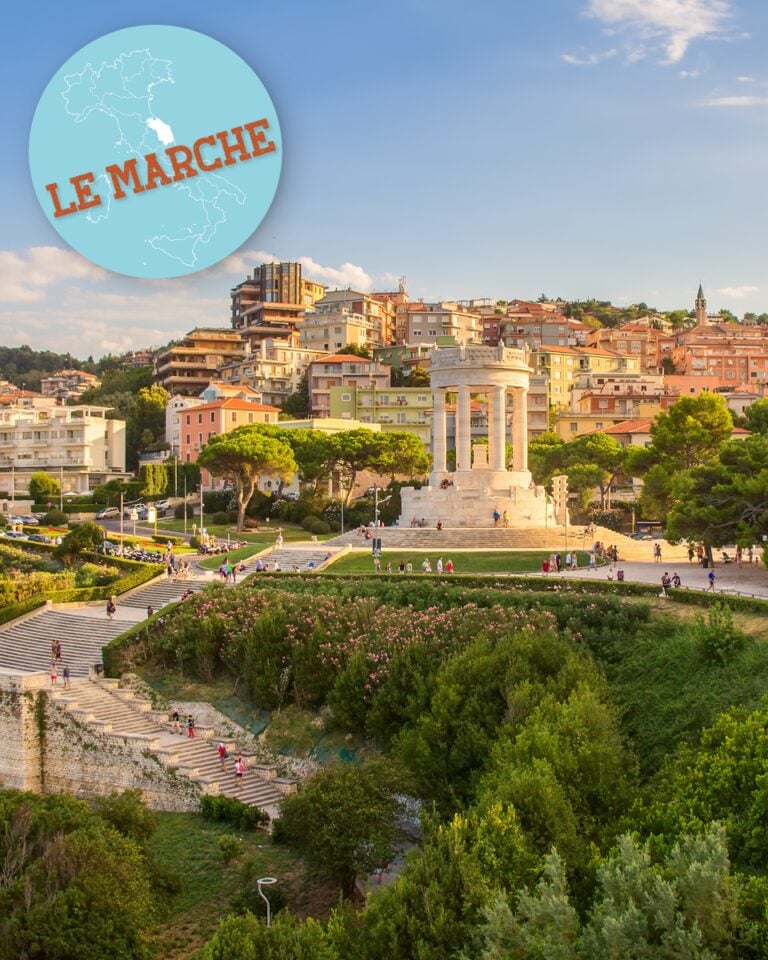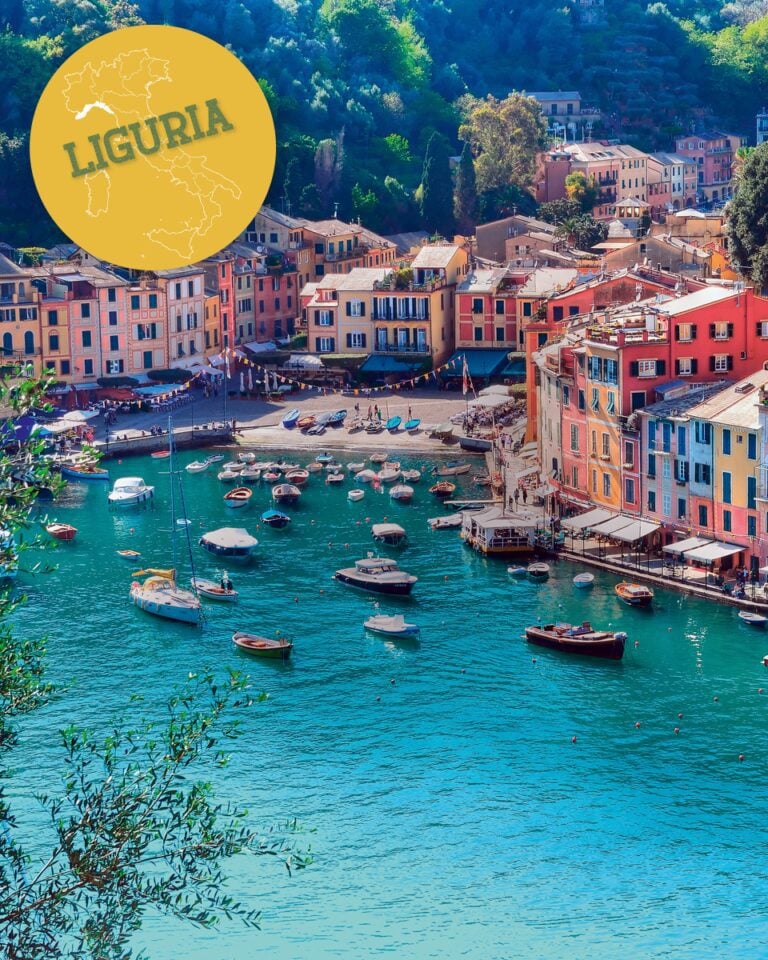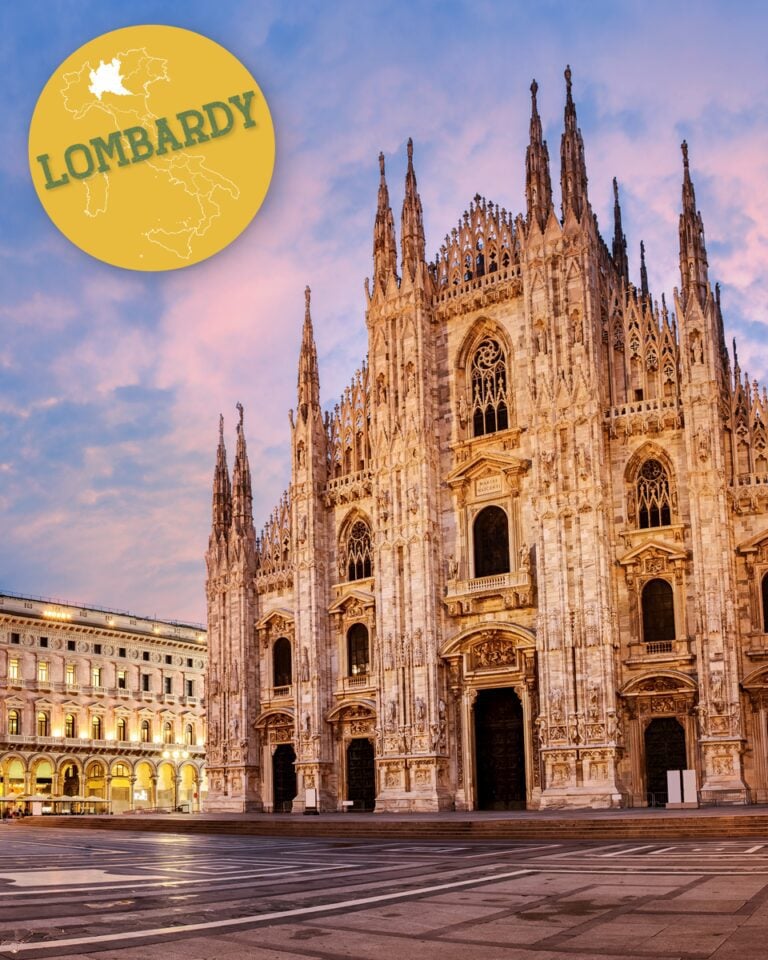Your essential food guide to Lazio
Discover the food, drink and dishes Lazio is best known for with our food lover’s guide to the region. Being home to Rome, Italy’s capital, means the rest of Lazio often plays second fiddle to the grand city. But the fertile farmland, hilltop villages and coast deserve more recognition (and visitors) than they get. In terms of famous recipes, Rome is where it’s at – this is where famous pasta dishes like carbonara and cacio e pepe come from, as do many meat and vegetable dishes, all named ‘alla romana’ to ensure their origin is never disputed.
Plus: chef Leonardo Pieri Buti shares a traditional oxtail stew recipe that tastes even better eaten the next day and is ideal for the seasonal shift into autumn.
Take a food lover’s tour of all 20 Italian regions with delicious. No flights necessary!
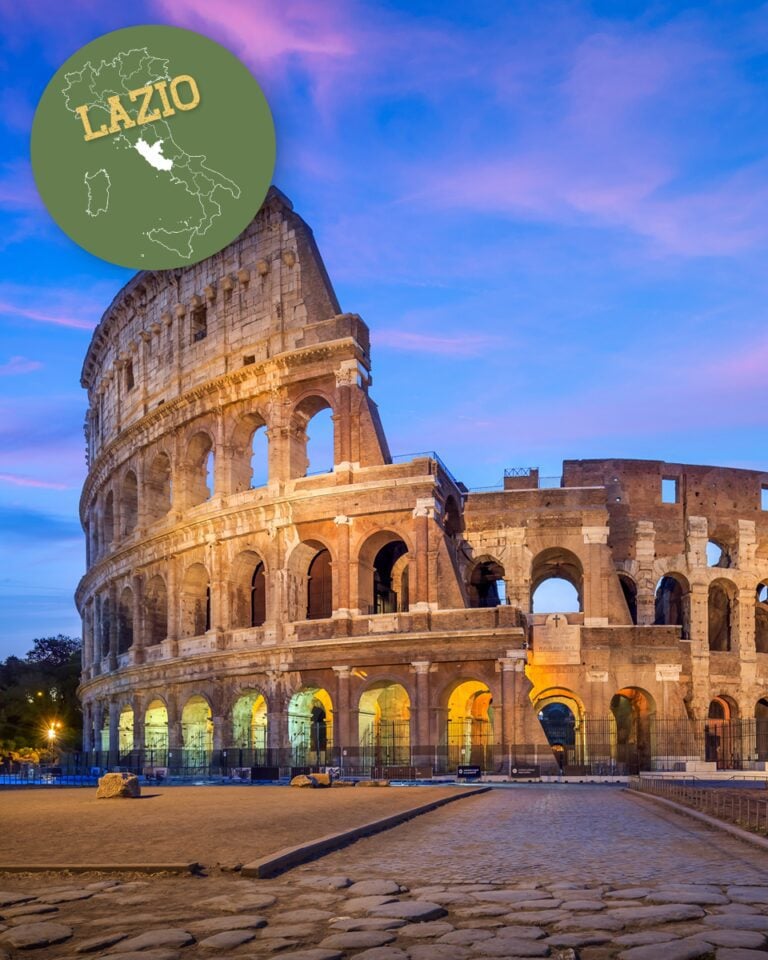
- The must-make recipe from Lazio
- What are the traditional ingredients in Lazio?
- What are the famous dishes from Lazio?
- The best cheeses to try from Lazio
- The best wines to try from Lazio
- The delicious. team’s top food experiences in Lazio
Get to know the food of Lazio
This focus on the capital is perhaps why Lazian cuisine is mostly famous for its dishes rather than the ingredients and products grown and made there. The surrounding countryside, however, provides plenty of culinary gems – artichokes, puntarelle and cauliflowers are highly prized, while artisans produce the excellent guanciale and pecorino romano needed for Rome’s beloved pastas.
Lazio has a significant coastline which is often overlooked, despite being home to some beautiful beaches (Romans often descend en masse on the seaside towns of Ostia and Fregene during the summer to escape the heat of the city). You’ll find some amazing shoreside restaurants serving incredible fish and seafood there, which is a completely different cuisine to the pasta-and-meat-heavy dishes further inland. Rome is, of course, a must-visit in Italy, but the surrounding region is well worth a look too.
Our hero recipe from Lazio
Coda alla vaccinara (Roman braised oxtail) by Leonardo Pieri Buti, executive chef at Italian restaurant Paper Moon at The OWO (Old War Office) hotel
This is an iconic dish of Rome’s ‘quinto quarto’ (fifth quarter) cuisine, which focuses on offal cookery. The offal in question here is oxtail, a beautiful cut that melts and falls apart once slow-cooked, and pairs particularly well with celery. The large amount of cocoa powder gives the sauce an earthy depth, while the raisins add little pops of sweetness.
“You can serve this as the main event, perhaps with some polenta, or remove the meat from the bones and use it as a ragù for pasta (in which case, make sure you grate over plenty of pecorino). I like eating this dish with my hands rather than cutlery; it tastes completely different! And be generous with the celery; coda alla vaccinara without celery is like the sky without stars,” says chef Leonardo Pieri Buti.
Cook Leonardo’s Lazian coda alla vaccinara
What are the traditional ingredients in Lazio?
- Pasta Tubular pasta shapes such as rigatoni, tortiglioni and longer shapes like bucatini (hollow spaghetti) and fettuccine (a slightly thicker tagliatelle) all come from Lazio, and feature prominently in its dishes.
- Guanciale Lazio’s meat-curing traditions generally focus on whole cuts of pork, rather than mincing up the meat to make sausages. Guanciale (cured pork cheek) is by far the most popular, usually chopped up small and fried for pasta dishes. Pancetta is generally used as a substitute for guanciale in the UK, but it is a completely separate thing (pancetta is made with pork belly and tastes significantly different).
- Offal One of the most distinct parts of Rome’s cuisine is the quinto quarto (fifth quarter), which refers to offal. Traditionally, when an animal was butchered, the best cuts went to nobility, second-best to the church, third-best to wealthy merchants and the fourth-best to the army. All that was left for the working classes was the offal – which became known as the ‘fifth’ quarter. Of course, Italians being Italians, they made the most of what was available to them and Rome’s offal cookery is among the best in the world – although it has become less popular in recent years.
- Vegetables Artichokes are a particular favourite in Rome, often deep-fried in olive oil until crisp and golden or stuffed with garlic and herbs and braised in white wine. There’s also the mesmerising romanesco cauliflower, with its bright green fractal shape, which is native to Lazio (the clue is in the name). Puntarelle is a local variety of chicory, often cooked alla romana (dressed with heaps of garlic and anchovy).
- Olives Lazio’s gaeta olives are a small, purplish-black, mild variety generally regarded as the best olive to cook with. They come from the town of the same name, right next to the Campanian border, and are exported all over the world.
Artisans produce the excellent guanciale and pecorino romano needed for Rome’s beloved pastas
What are the famous dishes from Lazio?
- Carbonara One of the all-time great pasta dishes, the simple combination of fried guanciale, pecorino romano, egg, black pepper and a tiny splash of the past water creates a silky, rich, creamy sauce for all sorts of pasta shapes (although spaghetti and rigatoni are the most common). Like any popular dish, the recipe has been bastardised in other countries, but in Rome, anyone serving carbonara with pancetta or daring to add cream would be laughed out of the city.
- Cacio e pepe Another pasta sauce which showcases the incredible texture you can create by emulsifying grated pecorino romano and starchy pasta water, the only other ingredient in this dish is lots of black pepper. It takes skill to get the velvety texture just right, which should cling to every piece of pasta. Its specific origins are unknown, but it was most likely a favoured dish with the shepherds of the region, as both pepper and pecorino keep for a long time.
- Bucatini all’amatriciana The third of Lazio’s famous pasta dishes doesn’t come from Rome but the nearby town of Amatrice. Tomatoes, guanciale, pecorino romano, white wine and black pepper form the sauce, which is always paired with bucatini – thick, hollow spaghetti.
- Pasta alla gricia A lesser-known pasta dish but a very important one, gricia is like a carbonara without the egg or cacio e pepe with guanciale.
- Trapizzino Most Italian dishes are steeped in history, with a story that goes back centuries. Trapizzino is the exception. Invented in 2008 by a chef called Stefano Callegari, it’s a cone of pizza dough stuffed with different fillings. Today it’s one of Rome’s most beloved street foods – and in a country where messing around with tradition can land you in hot water, it’s a rare success story of a chef trying something new.
- Supplì al telefono Sicily may have its arancini, but in Rome they have supplì – cylindrical rice and tomato sauce croquettes with a mozzarella centre. The ‘telefono’ refers to the strings of melted cheese when the supplì is broken in half and pulled apart – it’s said to resemble an old curly telephone wire.
- Saltimbocca A simple dish that sees thin pieces of veal wrapped in parma ham and sage leaves, then fried in butter and white wine, saltimbocca is a classic example of Italian cooking. It’s immensely popular in Italian-American cuisine too, although the veal is generally replaced with chicken.
- Gnocchi alla romana The gnocchi most of us know are small boiled potato dumplings, but in Rome they’re shaped into discs, prepared with semolina not potato as well as milk and butter. They’re then layered into a dish, covered in pecorino romano and baked.
- Coda alla vaccinara One of the most famous historical dishes of Rome, this oxtail and celery stew usually includes cocoa powder and raisins for a bittersweet earthiness. It’s generally served with polenta for a rustic, hearty dish that’s perfect for winter.
- Maritozzi The pastry of choice in Rome, these cream-filled brioche buns are becoming more and more popular outside Italy. The dough is flavoured with orange, vanilla and honey, with a multitude of different flavoured fillings.

The best cheeses to try from Lazio
Pecorino romano is the cheese of choice in Lazio and is still made in the same way it was in Ancient Rome. However, only around five per cent of the world’s pecorino romano is actually produced locally (almost all of it comes from the island of Sardinia, with a little more produced over the border in Tuscany). But there are plenty of other sheep’s milk cheeses produced exclusively in Lazio – pecorino di picinisco being arguably the most famous.
The best wines to try from Lazio
The land around Rome is particularly suited to white wine production – and that’s what the region is predominantly known for. Hundreds of grape varieties are grown (the most common of which are trebbiano and malvasia), but the big-hitter bottles to search for are frascati superiore and cesanese del piglio. For a Lazian red, velletri is generally regarded as the best, and the trebbiano grape is regularly used to make sparkling whites.
Browse wine editor Susy Atkins’ pick of the nine best Italian wines to buy right now.
The delicious. team’s top food experiences in Lazio
Mia Rodriguez, Editorial assistant
“Sitting out front of Da Bucatini in Rome, I enjoyed proper Roman pasta. We skipped all the sides and cracked on with the carbs. Scialatelli vongole, porcini e pacino giallo was a favourite: pasta with clams, mushrooms and sweet yellow tomatoes. Anything with artichoke is always a hit too. Expect mega portions.”
Subscribe to our magazine
Food stories, skills and tested recipes, straight to your door... Enjoy 5 issues for just £5 with our special introductory offer.
Subscribe
Unleash your inner chef
Looking for inspiration? Receive the latest recipes with our newsletter
